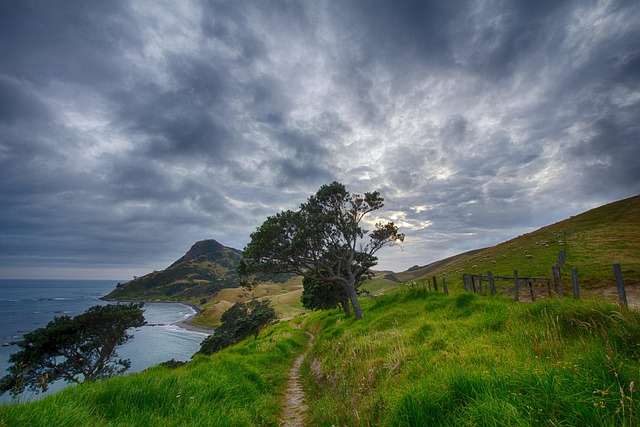In coastal regions, where harsh weather conditions and salty air pose unique challenges, selecting the right fencing material is paramount. This article explores durable wooden fencing as a viable solution for protecting properties along the coast. We delve into the environmental factors that influence fencing choices, highlighting the benefits of wood in these settings. Through this guide, readers will discover how to navigate selection, installation, and maintenance to ensure long-lasting coastal fence systems, drawing from real-world case studies for informed decision-making.
- Understanding Coastal Environment Challenges for Fencing
- Benefits of Durable Wooden Fencing in Coastal Areas
- Choosing the Right Wood Species for Coastal Conditions
- Installation Techniques for Longevity in Salty Environments
- Maintenance Strategies to Prolong Fence Lifespan
- Case Studies: Successful Wooden Fencing Installations Near Coasts
Understanding Coastal Environment Challenges for Fencing
The coastal environment presents unique challenges when it comes to installing and maintaining fencing. Salty air, frequent moisture, and extreme weather conditions can accelerate wood decay and corrosion, making standard fencing materials unsuitable for these areas. Traditional wooden fences often struggle to withstand the relentless assault of salt water and harsh weather patterns prevalent along coastlines.
These environmental factors contribute to a faster deterioration process, leading to frequent repairs or replacements. As such, choosing durable fencing options is essential for coastal properties to ensure long-lasting protection. Understanding these challenges allows homeowners and contractors to select materials that can resist the coastal climate, providing both aesthetic appeal and functional security without compromising longevity.
Benefits of Durable Wooden Fencing in Coastal Areas
Durable wooden fencing offers several advantages for coastal areas, making it an attractive and functional option for homeowners and businesses alike. One of its key benefits is aesthetics; natural wood adds a charming and classic touch to any landscape, enhancing curb appeal. In coastal regions, where homes often face breathtaking views, a well-designed wooden fence can complement the surroundings seamlessly.
Additionally, durability is a significant advantage. Treated wood varieties used in these fences are designed to withstand harsh weather conditions, including salty air and frequent exposure to moisture. This ensures that the fencing remains strong and structural integrity over time, providing long-lasting protection for properties. Moreover, wooden fences offer privacy and security, which are essential considerations for coastal residents who value their space and peace of mind.
Choosing the Right Wood Species for Coastal Conditions
When selecting wood for coastal fencing, understanding the local climate and environmental factors is key. Saltwater exposure, high humidity, and frequent storms can take a toll on any material, but the right wood species can offer exceptional durability in these conditions. Hardwood varieties like cedar, redwood, and teak are renowned for their natural resistance to rot, mold, and insect damage, making them ideal choices for coastal areas. These woods have dense structures that repel water effectively, minimizing the risk of warping or splitting.
Each species has unique characteristics; for instance, cedar’s natural oils provide excellent rot resistance, while redwood’s high density makes it incredibly durable. Teak, known for its golden color and distinct grain, is highly resistant to both fading and insect infestation. Proper treatment, such as pressure-treating or applying preservatives, can further enhance the longevity of these woods, ensuring they stand the test of time against coastal challenges.
Installation Techniques for Longevity in Salty Environments
When installing wooden fencing in coastal areas, special techniques and considerations are essential to ensure longevity in salty environments. One effective method is pre-treating the wood with specific preservatives designed to withstand salt corrosion. These treatments create a protective barrier, preventing moisture and salt from penetrating the wood’s surface. Additionally, using stainless steel hardware instead of regular metal fasteners reduces galvanic corrosion, further prolonging the fence’s life.
Another crucial step is proper installation to minimize water accumulation behind the fencing. This involves ensuring adequate drainage and using materials that allow for ventilation, such as breathable membranes or mesh. By preventing waterlogging, you reduce the risk of wood rot and mold growth. Regular cleaning with mild detergents and inspections for any signs of damage or decay will also contribute to maintaining the fence’s durability in coastal conditions.
Maintenance Strategies to Prolong Fence Lifespan
Proper maintenance is key to extending the life of your durable wooden fencing in coastal environments. Saltwater, high humidity, and constant exposure to wind and rain can accelerate wood decay. Regular cleaning is essential; brush or sweep away sand, salt deposits, and debris that may accumulate on the fence. Applying a fresh coat of protective finish annually can seal out moisture and prevent rot. Inspect your fence for any signs of damage, such as split boards or loose posts, and repair them promptly to avoid further deterioration.
Additionally, consider using a water-repellent wood treatment before installing the fencing. This can create a barrier between the wood and the harsh coastal elements, slowing down the aging process. Keeping the area around the fence clear of overhanging branches and plants will also help maintain its integrity by reducing potential damage from falling debris. Regular maintenance ensures your wooden fence remains strong and beautiful for years to come.
Case Studies: Successful Wooden Fencing Installations Near Coasts
In various coastal regions, durable wooden fencing has proven its mettle through numerous successful installations. For instance, in the seaside town of Marisport, a custom-built cedar fence withstood the test of time and harsh marine environments for over three decades, still maintaining its integrity and aesthetic appeal. This case study highlights the longevity and beauty that quality, weather-resistant woods like cedar can offer near coastal areas.
Another notable example is found in the bustling port city of Aquafortis, where a robust oak fence was installed to protect a residential property from frequent storms and high tides. The fence’s design incorporated a unique, interlocking joint system, ensuring stability against strong winds. This installation not only provided security but also enhanced the property’s curb appeal, demonstrating that functional coastal fencing can be aesthetically pleasing as well.
